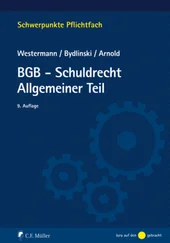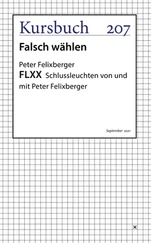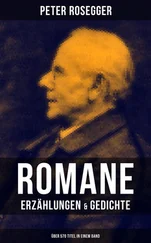The Culp’s Hill seismographs were among thirty instruments the Center for Earthquake Studies and USGS were installing around Memphis. Another forty had been shipped in from California and were being added to the network that already existed on the New Madrid Fault. These would be scattered over a huge area that included Little Rock, St. Louis, Chicago, Cincinnati, and Memphis. The instruments were linked to a central computer that funneled the seismic data straight to computers at the University of Memphis.
Several teams of scientists had been dispatched from the agency’s offices in Menlo Park and Golden to help with the setup. Several of Atkins’ colleagues from the Earthquake Risk Assessment unit at Reston, Virginia, had also been sent to the quake zone.
With heavy support from the University of Memphis, which had the most scientists in the field, and the USGS, the show was being coordinated by the Seismic Safety Commission. The group was composed of scientists and structural engineers from the five states most directly involved—Missouri, Illinois, Tennessee, Arkansas, and Kentucky. Walt Jacobs and several on his staff were members. The person in charge, a geophysicist named Paul Weston, had been appointed by the governor of Kentucky.
Atkins had never met Weston, but he’d heard a lot about him the last few days, primarily from Jacobs, who didn’t like the man.
“He’s smooth as silk, but he can be an arrogant bastard,” Jacobs said. “And that’s just for starters. It gets worse the longer you know him.”
Weston had solid academic credentials, a doctorate in geophysics from Stanford and post-doctorate work at MIT. He’d taught at the University of Kentucky. Jacobs explained that he was politically well-connected, especially with Tad Parker, the governor of Kentucky. Many considered Parker a top contender for the presidency. He’d already set up a campaign committee and was starting to get some national publicity. Parker had lobbied to get Weston put in charge of the Seismic Safety Commission.
Weston had insisted that the commission—and not the Center for Earthquake Studies or the USGS—was handling the earthquake investigation. The group’s first meeting was scheduled to start within the hour at the USGS offices at the University of Memphis.
Atkins and Jacobs had stayed longer than they’d planned on the hill and were running late. Absorbed by his thoughts on the S-wave velocities, Atkins barely spoke during the drive to the university. The extraordinary S-wave velocities could only have been caused by some unusual ground structure, say, a layer of soft sediment that made the waves diffuse and expand. Atkins wanted to run a computer simulation of the seismic data they’d already harvested. He didn’t like those S-wave velocities at all. They were way too low, way too destructive.
When they got back to the Center for Earthquake Studies, they had trouble finding a parking place. Television sound trucks were lined up four deep along Cottage Avenue, the main campus thoroughfare. Security police had kept the reporters a block from the center’s complex located in a pair of run-down, two-story brick homes that faced Cottage. Once private residences, the homes were in bad need of repair—everything from painting and recaulking the windows to fixing the furnaces. The USGS shared space with the earthquake center in a cluttered warren of rooms and hallways that had been partitioned and converted to offices.
As Atkins and Jacobs cut across the front lawn, a television reporter, who’d managed to slip past police, intercepted them.
“Do you think any more big ones are coming?” the young, heavily made-up woman shouted, jabbing a microphone in Atkins’ face.
He tried to ignore her and kept walking, but she pushed the mike closer.
“Are you expecting some more aftershocks?” She must have been wearing a thousand bucks’ worth of clothing. A designer suit, short skirt, and red pumps, despite the cold.
“We’ll have a news conference soon to try to answer some of those questions,” Atkins said, trying not to snap at her. The reporters had a job to do, but they could be totally irresponsible. He despised ambush TV interviews.
“Right,” the woman said, a surly edge to her voice. “You aren’t going to tell us shit.”
Atkins shrugged and pushed past her cameraman.
“Nice lady,” Jacobs said as they entered the earthquake center’s building through the front door.
“Charming,” Atkins said. He saw Guy Thompson approaching. Just the man he wanted to see. Thompson was from the agency’s hazards evaluation office in Reston. Thompson was wearing his usual Western shirt, faded jeans, and lizard cowboy boots. A CD player was clipped to a belt with a huge silver buckle shaped like a bucking horse. Thompson spoke with an Oklahoma drawl. He’d received his Ph.D. from the University of Oklahoma and could name every Sooner running back since the days of Bud Wilkinson. He was expert in using computer programs to simulate the ground motions of quakes. There was none better.
“John, you old vagabond. How long you been here?”
Atkins shook Thompson’s hand and told him he’d arrived a day earlier.
“You got your imaging program up and running yet?” he asked.
“Even as we speak,” Thompson said, running his hands through his thick, black hair that he wore to his shoulders. He was a pure-blooded Cherokee and proud of it. He and Atkins had stepped into an alcove to get out of the flow of traffic. The narrow hallways were jammed with filing cabinets, bookshelves, and storage boxes. The offices were crowded, the atmosphere electric as old friends greeted each other and caught up on news and gossip.
It always struck Atkins at such moments how small the world of professional seismology was. Everyone knew everyone else. What they were working on, the hot research, the rising stars. It was a small, closed society with no more than 125 real players, names that counted.
Thompson led Atkins to a large office, a former family room that had been converted into mission control for the Memphis earthquake. A half-dozen high-powered computers had been set up there. Thompson was in charge of all database programs, graphic presentations, and fault analysis.
“We’re just starting to plug in the S- and P-wave data,” he said. “We’ll have some pretty pictures real soon. Another twenty, thirty minutes.”
The “pictures” were computer images or simulations of what had happened along portions of the New Madrid Fault during the quake. Using techniques similar to medical CT scans, Thompson and his team of scientists were able to analyze sound and other waves generated by the earthquake and harvested by the seismometers. Seismic waves passing through a fault commonly slowed down. Their motion patterns could be used to map out the zones surrounding the fault. Thompson’s computer programs were able to draw three-dimensional pictures of what was happening deep underground. He mapped the fault’s outline by piecing together the faint echoes of seismic waves as they were reflected from buried rock layers. This provided a picture of the structures that produced the echoes. In some cases, you could actually see the fault itself.
Atkins told Thompson he wanted him to feed in the seismic data from Culp’s Hill. He thought they’d have enough for him to work with by early morning.
“Sure, no problem,” Thompson said. “It’s gonna get interesting around here real soon.”
MEMPHIS
JANUARY 11
11:15 A.M.
ELIZABETH HOLLERAN PEERED INTO THE BATHROOM mirror. Her light gray eyes looked red and puffy and she dabbed them with cold water. She’d had less than four hours’ sleep and looked as bad as she felt. It was nearly 3:00 before she’d found a motel, a Best Western five miles south of Memphis. Motel space was at a premium.
Читать дальше












